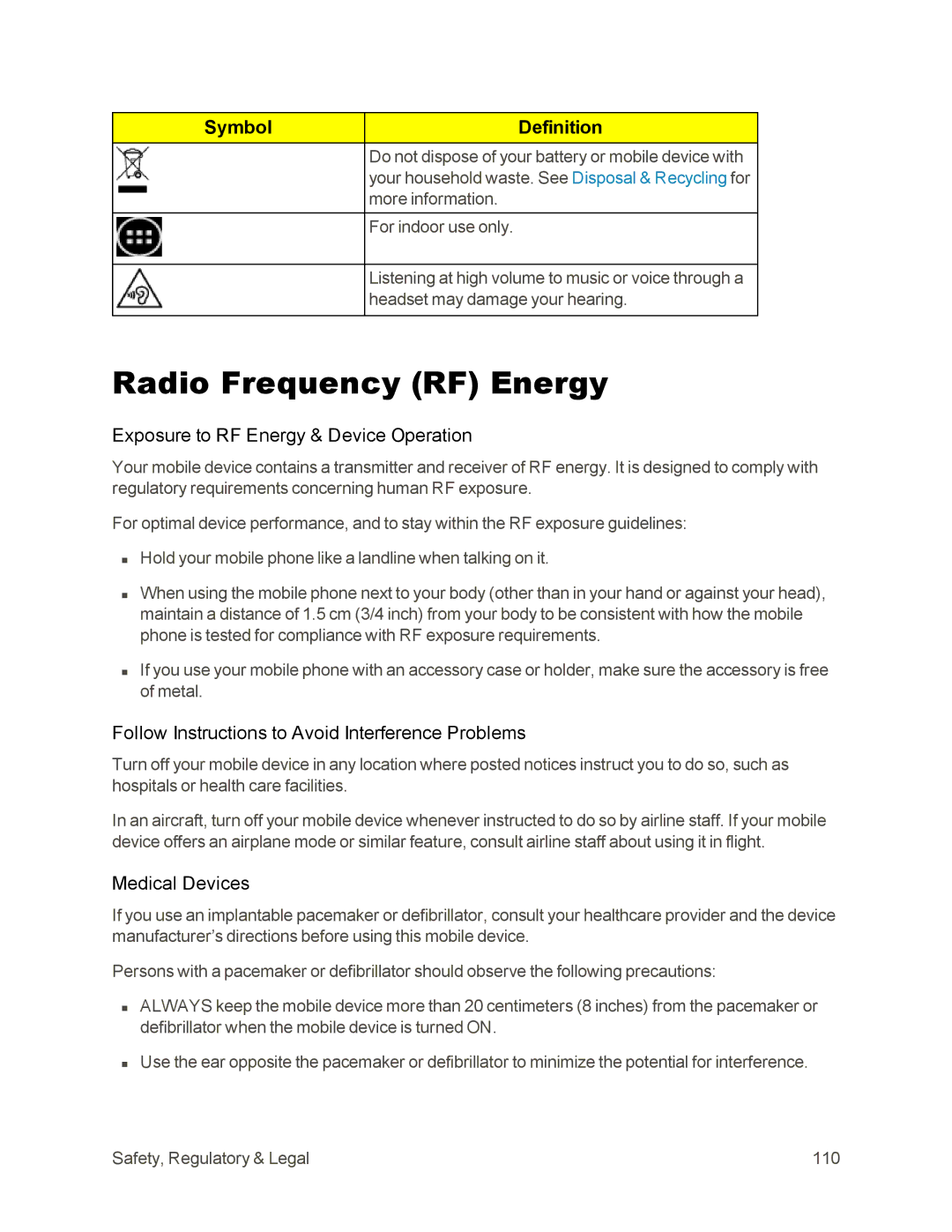
Symbol | Definition |
Do not dispose of your battery or mobile device with your household waste. See Disposal & Recycling for more information.
For indoor use only.
Listening at high volume to music or voice through a headset may damage your hearing.
Radio Frequency (RF) Energy
Exposure to RF Energy & Device Operation
Your mobile device contains a transmitter and receiver of RF energy. It is designed to comply with regulatory requirements concerning human RF exposure.
For optimal device performance, and to stay within the RF exposure guidelines:
nHold your mobile phone like a landline when talking on it.
nWhen using the mobile phone next to your body (other than in your hand or against your head), maintain a distance of 1.5 cm (3/4 inch) from your body to be consistent with how the mobile phone is tested for compliance with RF exposure requirements.
nIf you use your mobile phone with an accessory case or holder, make sure the accessory is free of metal.
Follow Instructions to Avoid Interference Problems
Turn off your mobile device in any location where posted notices instruct you to do so, such as hospitals or health care facilities.
In an aircraft, turn off your mobile device whenever instructed to do so by airline staff. If your mobile device offers an airplane mode or similar feature, consult airline staff about using it in flight.
Medical Devices
If you use an implantable pacemaker or defibrillator, consult your healthcare provider and the device manufacturer’s directions before using this mobile device.
Persons with a pacemaker or defibrillator should observe the following precautions:
nALWAYS keep the mobile device more than 20 centimeters (8 inches) from the pacemaker or defibrillator when the mobile device is turned ON.
nUse the ear opposite the pacemaker or defibrillator to minimize the potential for interference.
Safety, Regulatory & Legal | 110 |
